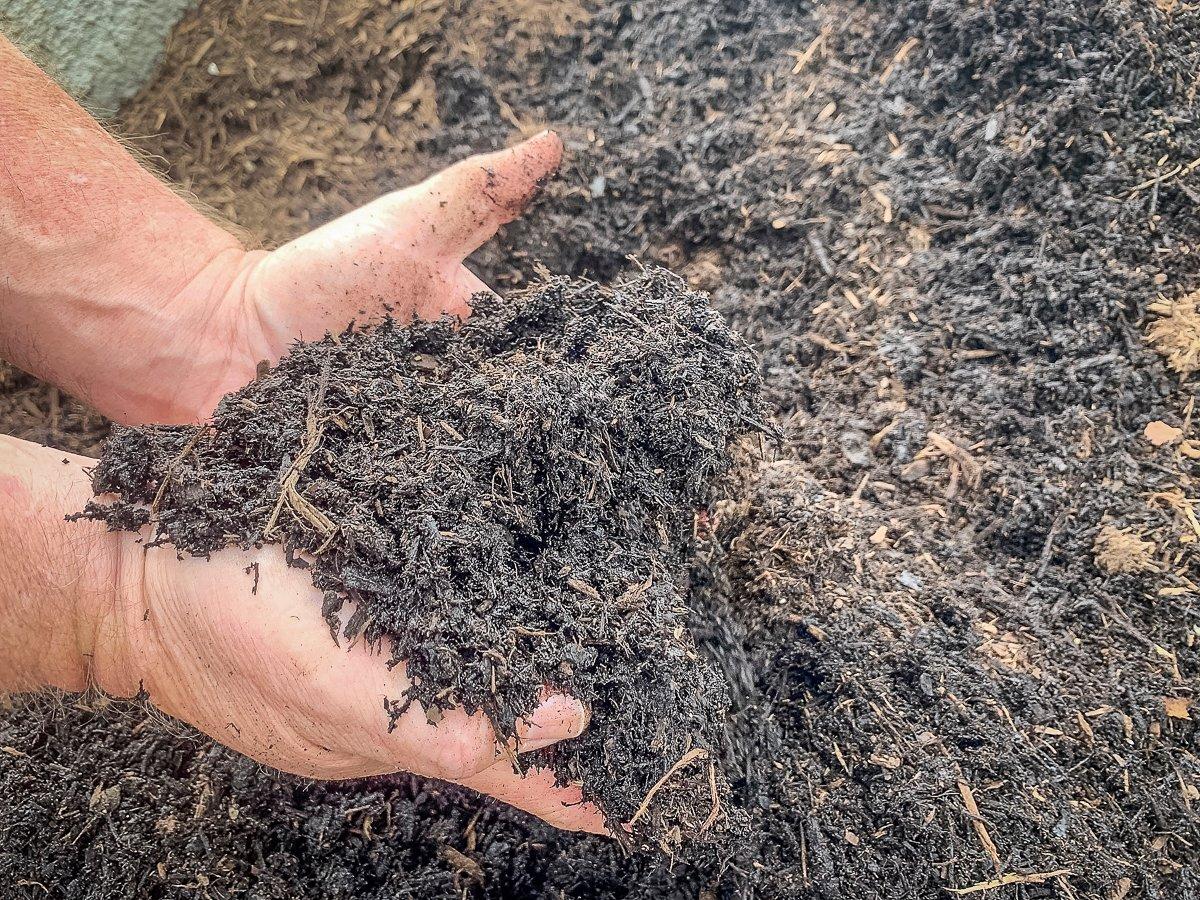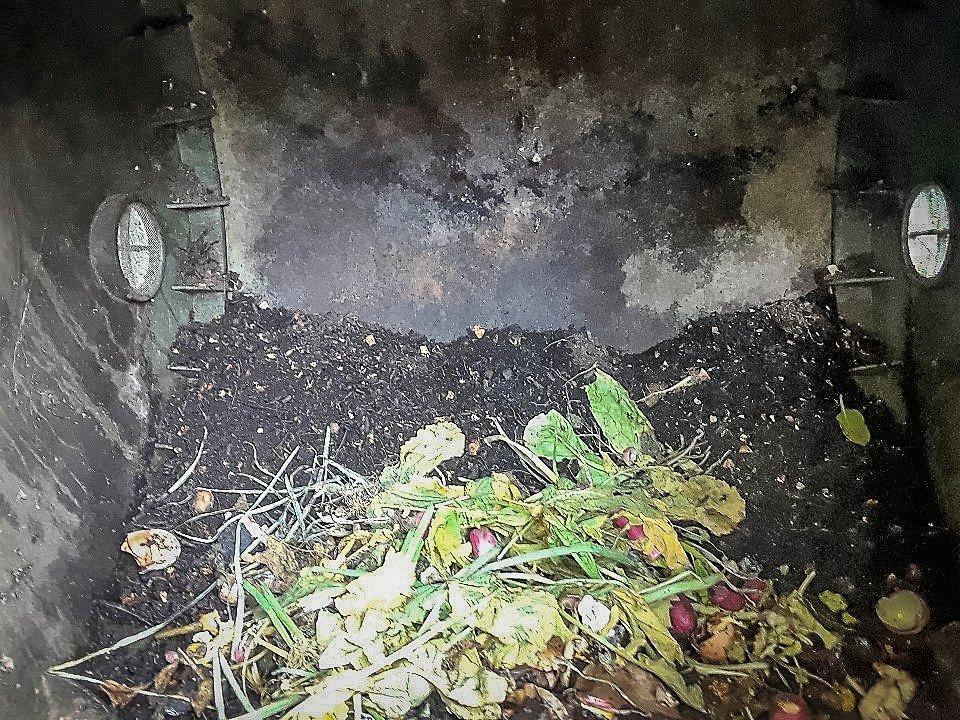Making organic fertilizer is simple, costs nothing, and it'll help you grow bigger vegetables, too
Black gold.
We aren't talking about oil here. We're talking about compost, which is about the best thing you can put on your garden soil. It's organic, and it will increase fruit and vegetable yield better than manufactured fertilizer. Here's the best part: it's free.
This magical soil amendment is simply nutrient-rich decayed organic matter. Compost benefits the soil, and the garden plants that grow in it, in several ways. First, it's a natural fertilizer, rich in nitrogen and, in some cases, phosphorus and potassium, which are the building blocks of healthy plants. Second, compost energizes the soil by strengthening the soil food web, which is made of beneficial microscopic bacteria, fungi, earthworms, crickets, and many other life forms that allow plants to thrive. Finally, compost helps retain moisture in the soil. Research from the University of California shows that well-composted soil holds almost twice as much moisture as non-composted clay and sandy soils.
The bottom line? Compost keeps your plants healthy, and healthy plants can better stand up to adverse growing conditions and disease.
How It Works
Composting controls the natural decay of organic matter by providing the right conditions for tiny organisms (mainly bacteria, fungi and protozoa) to break down kitchen, garden and landscape waste in a moist, aerobic (oxygen-demanding) environment. The results are a dark crumbly humus, perfect for blending into garden soil or adding around plants as a mulch.
Compost This, Not That
Just about any organic plant matter can be turned into good compost. Lawn trimmings that haven't been treated with herbicides or pesticides are perfect. So are pine needles, and all of those fallen leaves you rake up each fall. Spent flowers or landscape trimmings are great, too. Most kitchen waste can be composted as well. This includes leftover fruits, vegetables and their peels, coffee grounds (and filters), tea bags, egg shells, and more. All of those can go into a tin that you keep on or under the counter.
Avoid adding meat, bones, fatty foods, and leftover cooking oil to your compost. Don't add human and pet waste, either. Try not to add seeds to your compost, since some seeds can survive the composting process and sprout in your garden.
Get Piling
Composting can be as simple as piling up the materials and occasionally turning it over with a pitchfork to speed the process. If an unsightly pile of lawn clippings and kitchen waste doesn't appeal to you, then build wooden bins to keep the compost materials piled in place. A bin with three chambers allows you to move the composted material down the line as it breaks down, so that you always have a supply of finished compost ready to use. The first bin holds fresh material. As it starts to break down, you move the material to the second bin. Once the process is almost complete, you place it in the third bin.
The fastest way to turn waste materials into finished material are barrels, drums, or commercial compost tumblers that can be rotated on a regular basis to constantly turn the material inside. Barrels and drums with removable lids allow you to easily add organic material and water. Then you close it up and turn it, rolling the bin back and forth on the ground to mix the material inside. Commercial tumblers are the easiest, since they are often mounted on a freestanding frame, which allows the entire container to be easily rotated by hand.
All organic matter breaks down eventually. Your goal is to speed the process along as much as possible. To do that, you need to meet a few conditions. First, the carbon-to-nitrogen ratio of the materials you want to compost needs to be about one part carbon to 30 parts nitrogen. Materials that are rich in carbon include leaves, straw and sawdust. Materials rich in nitrogen are green materials like lawn clippings, kitchen scraps and plant trimmings. Try to add more nitrogen-rich materials to your pile than carbon-rich ones.
Next on the list is moisture. If you don't live in an area with consistent rainfall, add moisture to your pile by occasionally spraying it with a hose. The microbes responsible for breaking down organic matter work best in a moist environment, but stop working in wet conditions – so don't overdo it with the hose. Your compost pile should feel like a wrung-out sponge to the touch.
Finally, your compost needs oxygen. To keep an oxygen-rich environment in the center of your compost, agitate it on a regular basis. If you use a bin, simply work through the pile with a garden fork, scooping from the bottom and depositing on top.
A good rule of thumb is to turn your compost pile every 3 to 5 days. The process of decay releases energy, so you can tell if a pile is healthy when it gives off heat. That means the center of your pile should stay between 100 and 140 degrees. If your compost isn't warm to the touch, it's either too dry or you aren't turning it frequently enough.
Healthy compost doesn't smell bad. If your pile has a strong ammonia odor, that means it doesn't have enough oxygen. Turn it more often and don't add additional water until the pile dries slightly, and the odor goes away.
Know Your Poop
While human and pet waste are to be avoided, livestock droppings and used stall bedding materials like straw or sawdust are the perfect addition to your compost pile. Fresh, or green, manure is too high in nitrogen and can actually burn plants, but manure that has been through the composting process is rich in nitrogen, phosphorus and potash – the three main building blocks of all fertilizer.
Great manure choices include cattle, horses, sheep, goats and rabbit dung. Hog manure can also be used, but it tends to have a stronger odor than other livestock. If you don't own livestock, you can usually get manure and used stall bedding for free if you are willing to load and transport it from local farms.
To use manure in your compost, simply add it to the pile and turn it in with a garden fork. The microbes already in your pile will readily go to work on the new addition. Like all compost, your manure-based product will be ready to use when it no longer resembles rotting vegetables or animal waste. It should look dark brown, crumble to the touch and smell like rich, dark earth.
Use it Right
So, once your compost is ready to use, what do you do with it? For new garden areas, spread 2 to 6 inches of compost over the planting area and work it into the existing topsoil with a garden fork or tiller. Adding compost this way allows your vegetables to build healthy, deep root systems and provides them with all the nutrients they need.
For existing gardens, you can put compost around the plants. Simply add a ½- to 1-inch deep layer of compost around the base of the plant that extends for several inches in circle around the plant. This helps to control weeds and retain moisture that would otherwise be lost to evaporation. The organic nutrients in the compost will slowly work their way down into the soil with each rain or watering, and eventually into the plant's root system.
You can also turn compost into a liquid fertilizer by making compost tea, a nutrient-rich liquid made by steeping finished compost in water. All you need are a couple of 5-gallon buckets, a strainer large enough to cover one of the buckets, a stick and some finished compost.
Start by filling one of the buckets a third of the way full with compost. Next add stored rain water or well water (avoid tap water, which contains chlorine) to fill the bucket an inch or two from the top. Use the stick to stir the compost into the water. Repeat the stirring process once or twice per day for five days.
After five days, pour the mixture through the strainer (even an old pillowcase stretched over the top of the bucket will work) into an empty bucket. Your compost tea is now ready to use. The rich nutrients in the compost have leached into the water, resulting in a liquid fertilizer that's perfect for watering seedlings or existing vegetables. Since the compost is in liquid form, the plants can easily and quickly absorb it through their root system. Some gardeners like to add even more nutrients to their compost tea with additions like sorghum molasses or finely-ground oatmeal.
If you enjoy growing, harvesting, and eating your own fruits and vegetables, the addition of rich compost will pay off in the form of greater yield, healthier plants and better-tasting produce. It only costs a few minutes of work per week, saves money on fertilizer and helps cut down on waste material that might otherwise end up in a landfill. Starting and keeping your own compost pile is a win in every way.
Read: The Carnivore's Guide to Planting a Garden
Check out Michael Pendley's Timber 2 Table wild game recipes here.










